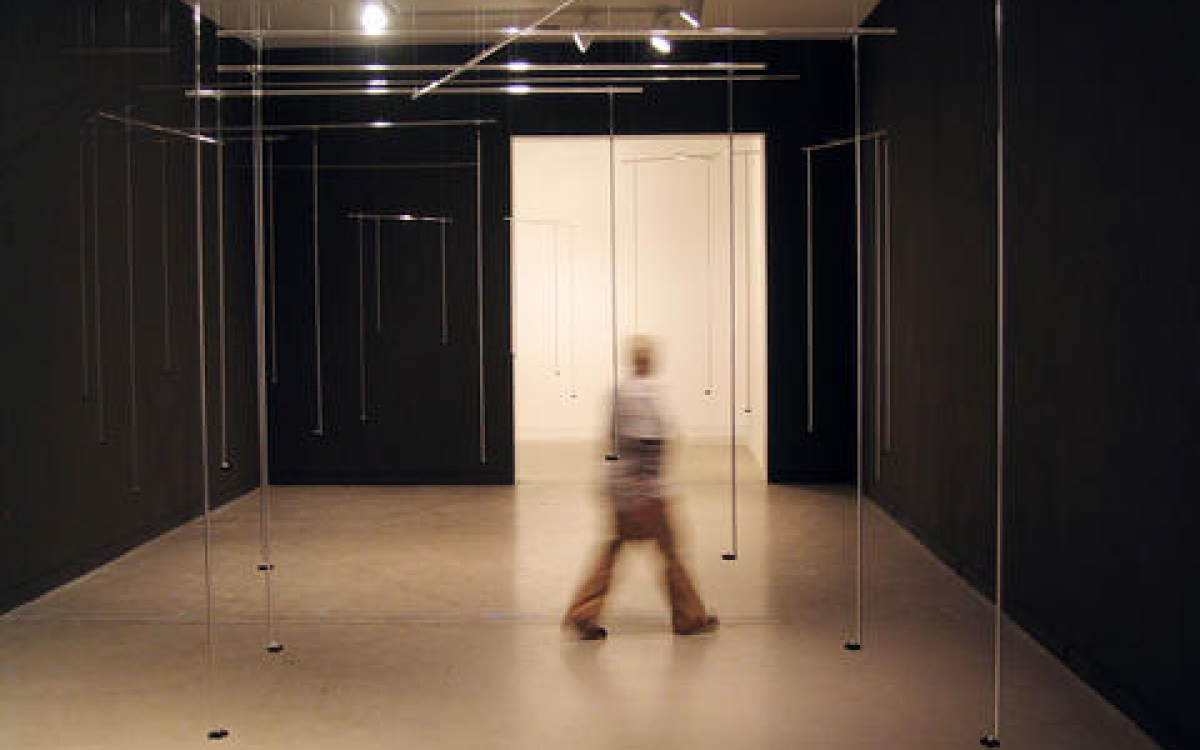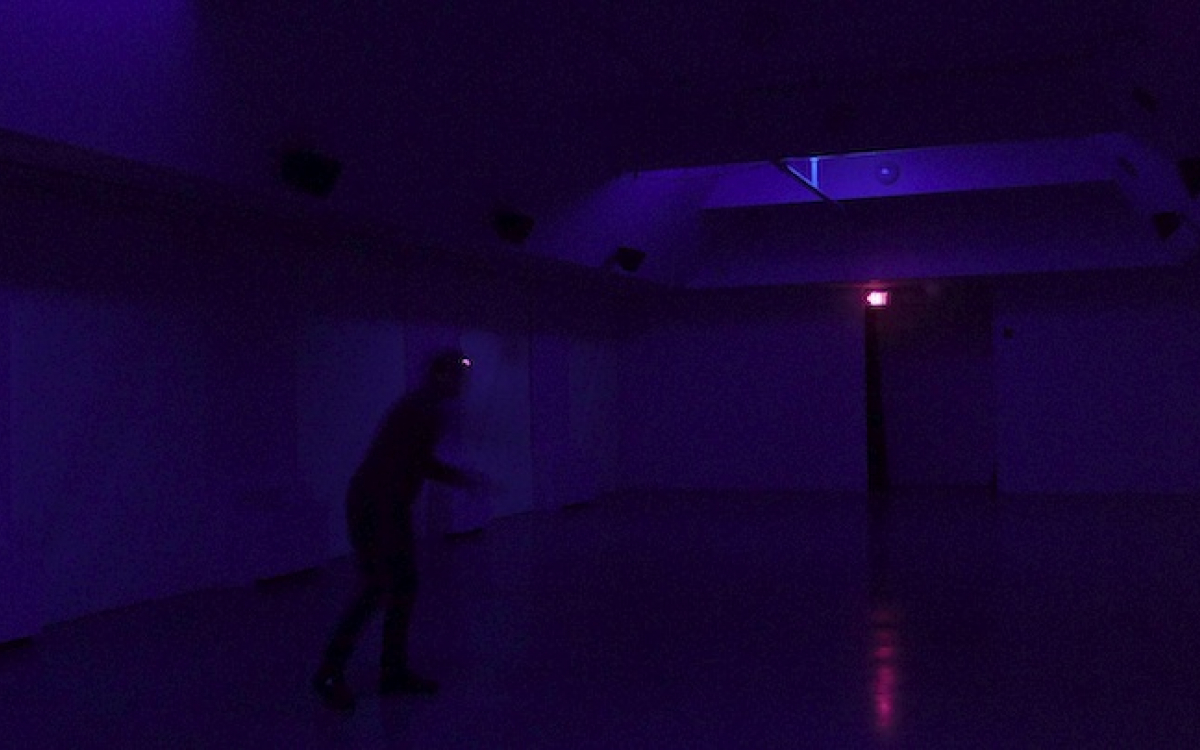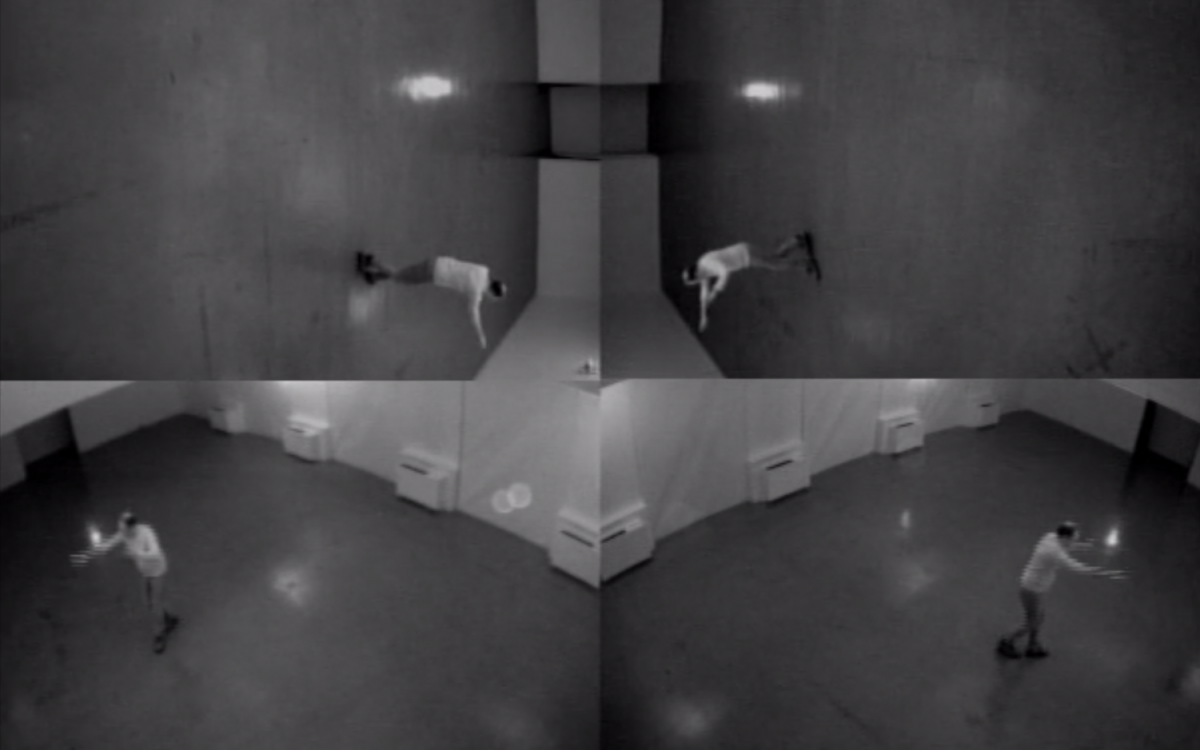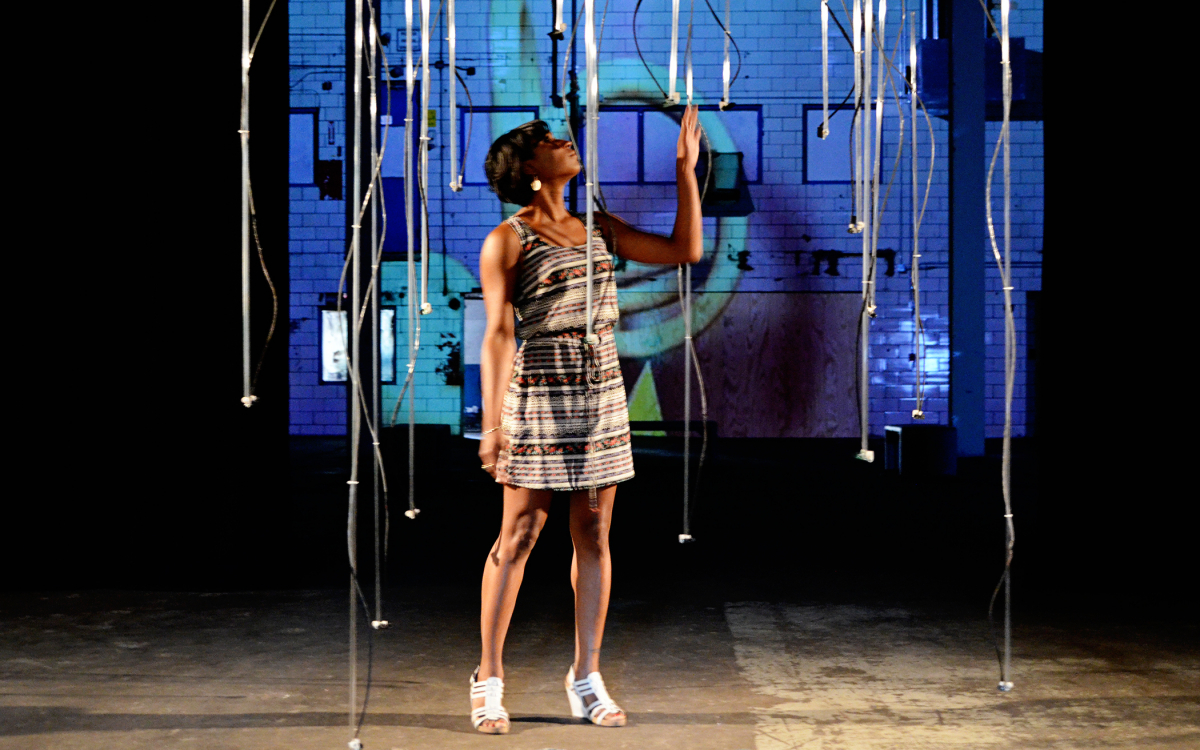Play: In Three Acts
Extended through Saturday, May 23, 2015. Play: In Three Acts highlights the work of three artists - Joe McKay, David Rokeby, and Nina Waisman. Each artist explores various modes of interaction within their work: Waisman and Rokeby incorporate sound and embodied interaction; McKay incorporates playful interaction around competition and cooperation.
OPENING RECEPTION
Meet the Artists at the Opening Reception: Saturday, February 7, 2015 - 2pm-5pm - Free and Open to the Public.
Note: Nina Waisman will incorporate performances by professional dancers during the Opening Reception:
2:30 p.m & 3:45 p.m. Performance by Flora Wiegmann, LA-based dancer and choreographer.
3:15 p.m. & 4:30 p.m. Performances by UCI dancer Gunta Liepina, choreographed by UCI Professor Lisa Naugle.
ABOUT THE ARTISTS AND THEIR WORK
Light Wave by Joe McKay: Light Wave is a two player “video” game, played on twenty-four floor lamps instead of a screen. At either end of the long serpentine row of lamps sits a pedestal with a force sensor embedded in the top. Hitting the pedestal sends a signal through the lamps, turning them on and off in sequence. The harder the hit of the pedestal, the faster the signal travels. If the second player times their hit precisely they can return the signal back through the lamps. The rally continues until someone miss-times the hit and the game resets. Each player can play to win the game or cooperate with your opponent to play the game as long as possible. Most games do not allow for this critical choice to be made. It is a game - easy to play yet fun and addictive. The installation presents us with a collection of random lamps each one unique, yet the game asks us to think of each lamp as a pixel, and see the blinking lights as an animation. The title itself invokes the dualistic nature of light, which is famously both a particle and a wave.
Joe McKay is a digital media artist that uses games and interactivity to critically examine the way our culture is consuming and creating current technology. McKay works in several different mediums, including sculpture, performance, video games, video, photo and more. McKay received a BFA from NSCAD and a MFA from UC Berkeley. McKay has an extensive exhibition history, both in New York City and internationally. He is currently represented by Pari Nadimi Gallery in Toronto. McKay is a professor of New Media at SUNY Purchase College. For more information about the artist visit: http://www.joemckaystudio.com/.
Dark Matter by David Rokeby: Dark Matter is set in a darkened space dominated by an invisible sculpture of silent sound. Your body probes the space searching for zones of interaction that create a virtual sculpture that produces sounds through your contact with its immaterial presence.
The sounds are all very physical: breaking ice and breaking glass, creaking metal, falling rocks, bursts of flame. They stand in stark contrast to the immaterial nature of the interaction: your hands and body appear to draw the sounds out of thin air. The sound, being tactile at root, creates a spectral tactility, a confrontation between presence and absence like that which is increasingly present in our daily interactions with our contemporary devices and media.
David Rokeby is an installation artist based in Toronto, Canada. He has been creating and exhibiting since 1982. For the first part of his career he focused on interactive pieces that directly engage the human body, or that involve artificial perception systems. In the last decade, his practice has expanded to included video, kinetic and static sculpture. His work has been performed/ exhibited in shows across Canada, the United States, Europe and Asia. Rokeby was awarded the first BAFTA (British Academy of Film and Television Arts) award for Interactive Art in 2000 and the Governor General's award in Visual and Media Arts and the Prix Ars Electronica Golden Nica for Interactive Art in 2002. He was awarded the first Petro-Canada Award for Media Arts in 1988 and the Prix Ars Electronica Award of Distinction for Interactive Art (Austria) in 1991 and 1997. For more information about the artist visit: http://www.davidrokeby.com/home.html.
Body Envelope by Nina Waisman: Body Envelope makes the visitor’s body a tool for tuning an extended cosmos, mapping sounds of far-flung worlds into the visitor’s peripersonal space. Sensors are suspended to sketch a delicate, amoeba-like, 3-dimensional body envelope. Some sensors respond to the slightest bodily movements, others must be reached for conscientiously. When entered and played, the piece surrounds visitors with sounds selected from wide reaches of spatio-temporal experience – animal, human, machine, cosmic, delicate, aggressive, articulate, anomic. Each visitor composes a shifting sonic space, reweaving space, time and meaning with natural movements that trigger sounds. Those sounds then change in pitch, speed, volume and spatialization, in relation to the visitor's movements.
Multiple versions of the piece will be put in play in alternation for the Beall Center - repeated visits will generate very different sonic worlds.
Nina Waisman will collaborate with dancers to present choreographed performances directly related to Body Envelope. Performances will be presented at the Beall Center – dance performers and dates to be announced.
Nina Waisman produces mutli-media projects that explore how technologically-driven forms of control and communication impact the body's space, time, and logic. As a former dancer, she is particularly fascinated with the critical role that movement-based modes of thinking play in forming our thoughts - neurologists and cognitive scientists call such “physical thinking” the pre-conscious scaffolding for all human logic. Waisman's interactive installations engage visitors in everyday acts of physical thinking, which trigger sounds connected to sites and issues such as the US/Mexican border, surveillance, consumer-military feedback loops, invisible labor, urban sound’s impact on bodies, and nanotechnology. Waisman’s work asks experientially: how might technologically-inflected forms and gestures shape our relationships with the bodies and systems we connect to when we move with technology? She has exhibited in museums, galleries and public spaces nationally and internationally: venues include the California Biennial at OCMA, the Museum of Image and Sound in Sao Paulo, Brazil, the CECUT in Tijuana, the House of World Cultures in Berlin, the Zero1 Biennial and ISEA. She recently completed projects for LA><ART in Los Angeles, Casa Vecina in Mexico City, and The New Children's Museum in San Diego, where she has a climbable, interactive sound installation on exhibit through 2016. For more information about the artist visit: http://www.ninawaisman.net.
Play: In Three Acts
OPENING RECEPTION
Meet the Artists at the Opening Reception: Saturday, February 7, 2015 - 2pm-5pm
Note: Nina Waisman will incorporate performances by professional dancers during the Opening Reception:
2:30 p.m & 3:45 p.m. Performance by Flora Wiegmann, LA-based dancer and choreographer.
3:15 p.m. & 4:30 p.m. Performances by UCI dancer Gunta Liepina, choreographed by UCI Professor Lisa Naugle.














